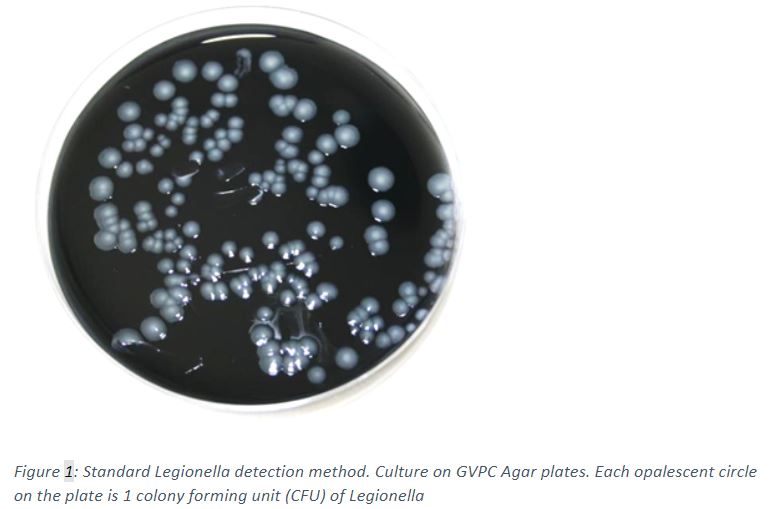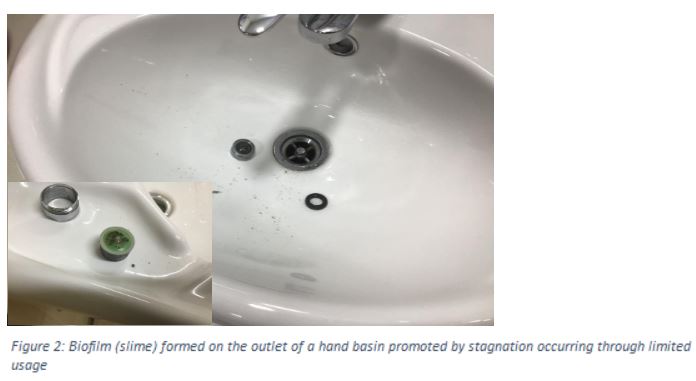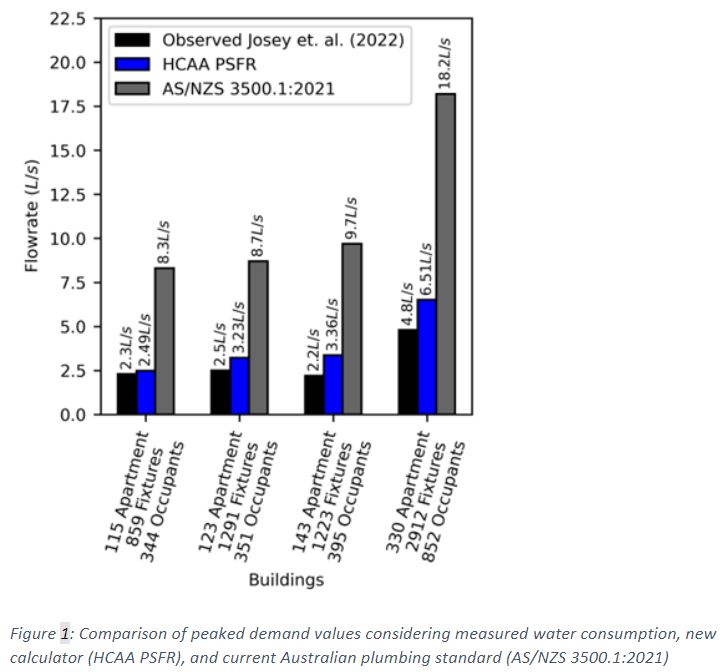
Highlighting the Latest International Plumbing Research from Australia
Here we highlight the work of two prominent Australian universities on new insights into managing the risk of Legionella in plumbing systems and water demand research.
As a global leader in the plumbing industry, the International Code Council has the privilege of collaborating with several international universities, academic institutions and research partners.
With so many organizations making significant contributions to plumbing knowledge around the world, staying updated with the latest research and academic findings can be challenging. Through the Code Council’s PMG Newsletter, we aim to spotlight these outstanding contributions from various regions, showcasing one country at a time.
Here we highlight the work of two prominent Australian universities. First, Dr. Harriet Whiley from Flinders University shares new insights into managing the risk of Legionella in plumbing systems. Then, we will delve into water demand research conducted by Mr. Brendan Josey from Deakin University.
New Insights Into Managing the Risk of Legionella in Plumbing Systems
Legionella spp. are bacteria that cause Legionnaires disease, a severe and potentially fatal pneumonia-like infection. The elderly and immunocompromised are particularly vulnerable, with outbreaks in hospital intensive care wards showing fatality rates as high as 48 percent. [1].
Legionella does not spread from person to person, it spreads through inhalation of aerosolized water contaminated with the bacteria. Legionella is naturally present in engineered water systems, and studies from around the world have demonstrated that low concentrations of Legionella are frequently present in drinking water distribution systems not associated with outbreaks [2]. This means that building water systems are constantly exposed to low concentrations of Legionella. As such, the design and operation of plumbing systems within buildings is critical to prevent Legionella from growing to high concentrations and posing a risk to human health.
Challenges with Detecting Legionella
One of the biggest challenges with managing the risk of Legionella in building plumbing systems is the limitations of the methods used to test for the bacteria. Culture based detection (ISO 11731) (Figure 1) is the standard method for detecting Legionella from water samples. However, this method fails to identify viable but non-culturable (VBNC) Legionella, which poses a significant risk.
The bacteria enter this VBNC form in response to environmental stressors commonly found in drinking water systems (such as high temperatures, the presence of disinfectants or low nutrients). In this VBNC form the bacteria are dormant, but still alive and infectious [1,3].

To better understand the limitations associated with the standard method for detecting Legionella, a novel method to detect Legionella in the VBNC form was developed [4]. The two methods were then compared by analyzing samples collected from a hospital water system in NSW, Australia.
A total of 120 water and 46 biofilm (slime) samples were collected from hand basins and showers located in patient ensuites. The samples were analyzed for Legionella using the standard culture- method (ISO 11731); our novel method to detect VBNC Legionella.
This study found 36/166 samples were positive for VBNC Legionella, but only four of these samples were positive using the standard detection method. This demonstrated that the standard culture-based method returned a false negative result in 89 percent (32/36) of samples that were positive for VBNC Legionella [4].
Preventing Stagnation
A range of factors influence the survival and persistence of Legionella in building water systems. This includes association with biofilms (slime), presence of nutrients, lack of disinfection residual, water temperature, flow dynamics and stagnation [5-7].
Previous research has shown that permanent stagnation points in engineered water systems, such as dead legs, are known to increase biofilm formation and the risk of Legionnaires disease. However, less is known about the effect of stagnation occurring at the end of the pipeline through intermitted usage of outlets [8].

Through a collaboration with Enware Pty Ltd, the Enware Smart Flow ® monitoring system was utilized to continuously measure water temperature and flow dynamics in real-time at the thermostatic mixing valves (TMVs) and handbasin outlets throughout a hospital water system.
The flow dynamic information identified how often an outlet had been used in the last month and the total duration of that usage. This information was then compared to the above-described water quality testing results for VBNC Legionella (using the new method). This showed that temporary water stagnation arising through intermittent usage (< 2 hours of usage per month) significantly (p < 0.01) increased the amount of VBNC Legionella.
This demonstrated that the design of building water systems must also consider the operation and usage of the facility to reduce the presence of outlets that are infrequently used and left stagnant for significant periods of time. It also demonstrates the importance of routine flushing of outlets to prevent stagnation in high-risk settings such as hospitals and aged care facilities.
Key Take–Home Messages
- Building water systems are constantly exposed to low concentrations of Legionella and effective design and operation is essential to prevent the bacteria from growing to high numbers that can cause Legionnaires disease.
- The standard testing method for Legionella often returns false negative results, which can lead to overconfidence in the effectiveness of a control method.
- Stagnation, both permanent (dead-legs) and temporary stagnation (through outlets not being used frequently) promotes the growth of Legionella and the risk of Legionnaires disease.
Water Demand in Plumbing Networks
When considering the design of plumbing networks, the estimated ‘peak demand’ heavily dictates the selected size of plumbing components (pipe diameter, pump duty points, valves, etc). When the demand is over-estimated, networks are over-sized, leading to additional costs and energy usage. This gap between the ‘design demand’ and the ‘operational demand’ can also lead to poor system performance and reduced water quality.
Many demand estimation formulas within international plumbing codes and standards are known to significantly over-estimate the ‘peak demand’ when compared to observed water consumption in residential buildings [1-3]. This known over-estimation has led to several research projects aimed at developing more accurate demand estimation techniques [4,5].
In Australia, the Hydraulic Consultants of Australasia (HCAA) have partnered with researchers from Deakin University to quantify and address this over-estimation when considering the design of plumbing networks in multi-level residential buildings.
Water Demand Investigation
In July 2019, the HCAA initiated its water demand investigation project which is still ongoing today. Water consumption data has been captured in four residential buildings in Australia (2 in Sydney, 2 in Canberra), ranging from 115 to 330 apartments and 900 to 3000 fixtures, respectively.
When comparing the measured water consumption data, the results showed that the flow rates for the cold-water services were overestimated by 3.5 – 4.5 times when using the design methodology within the Australian and New Zealand plumbing standard, AS/NZS 3500.1:2021. Meaning the cold-water mains within these buildings could have utilized DN 40 or DN 50 (approx. 40 mm or 50 mm or 1-1/2” to 2”) instead of a DN 100 (approx. 100 mm or 4”) pipes and still satisfy the performance requirements of the Plumbing Code of Australia.
Building on the success of enhancing the industry’s understanding of water use in residential spaces, the HCAA has acquired additional metering equipment to expand this project. In 2024, they will begin measuring cold and hot water usage in Australian hospitals, with plans to extend monitoring to other building types in the future.
A New Peak Demand Estimation Tool
Alongside the water demand investigation project, researchers at Deakin University have developed a new web-based peak demand calculator to address the overestimated peak demand. The calculator adopts the Wistort Method and its variants [6] to consider the number of fixtures and flow rates, the probability of use, and the estimated occupancy.
Probability values for typical residential fixtures were derived using a stochastic water demand model that implements fixture use data from Australian residential end-use studies [7]. Using measured water consumption data as the benchmark, the new formulas offer a significant improvement over the current Australian plumbing standard.
Case studies presented by H2X Engineering that show opportunities to reduce costs, along with energy and carbon use, while using a modern and accurate peak demand formula, can be found here.

In the 2025 public comment draft of the Plumbing Code of Australia, a new performance-based pathway to estimate the 99th percentile demand for cold water services is available for review and public consultation until July 1, 2024, and can be accessed here.
Key Take-Home Messages
- The Australian plumbing industry has initiated a long-term water demand monitoring scheme.
- Collected water service data has identified systematic over-sizing of Australian plumbing networks.
- A new peak demand calculator has been developed by researchers at Deakin University.
- The new peak demand formulas offer improved estimation, leading to a reduction of construction costs, energy consumption and carbon emissions.
Legionella in Plumbing Systems Research References
- Mercante, J.W.; Winchell, J.M. Current and emerging legionella diagnostics for laboratory and outbreak investigations. Clinical Microbiology Reviews 2015, 28, 95-133.
- Whiley, H. Legionella risk management and control in potable water systems: Argument for the abolishment of routine testing. International Journal of Environmental Research and Public Health 2016, 14, 12.
- Whiley, H.; Taylor, M. Legionella detection by culture and qpcr: Comparing apples and oranges. Critical Reviews in Microbiology 2016, 42, 65-74.
- Nisar, M.A.; Ross, K.E.; Brown, M.H.; Bentham, R.; Best, G.; Whiley, H. Detection and enumeration of viable but non-culturable (vbnc) legionella pneumophila from water samples using flow cytometry-cell sorting and quantitative pcr. Submitted, currently under review 2021.
- Nisar, M.A.; Ross, K.E.; Brown, M.H.; Bentham, R.; Whiley, H. Water stagnation and flow obstruction reduces the quality of potable water and increases the risk of legionelloses. Front Env Sci-Switz 2020, 8.
- Whiley, H.; Bentham, R.; Brown, M.H. Legionella persistence in manufactured water systems: Pasteurization potentially selecting for thermal tolerance. Front Microbiol 2017, 8, 1330.
- Abdel-Nour, M.; Duncan, C.; Low, D.E.; Guyard, C. Biofilms: The stronghold of legionella pneumophila. International journal of molecular sciences 2013, 14, 21660-21675.
- Nisar, M.A.; Ross, K.E.; Brown, M.H.; Bentham, R.; Whiley, H. Water stagnation and flow obstruction reduces the quality of potable water and increases the risk of legionelloses. Frontiers in Environmental Science 2020.
Water Demand Research References
- Tindall, J. and J. Pendle, Are we systematically oversizing domestic water systems?, in CIBSE Technical Symposium. 2015, CIBSE: London, UK.
- Douglas, C., S. Buchberger, and P. Mayer, Systematic oversizing of service lines and water meters. AWWA Water Science, 2019. 1(6).
- Josey, B.M., S.G. Buchberger, and J. Gong, Comparing Actual and Designed Water Demand in Australian Multilevel Residential Buildings. Journal of Water Resources Planning and Management, 2023. 149(1): p. 05022013.
- Jack, L., S. Patidar, and A. Wickramasinghe, An assessment of the validity of the loading units method for sizing domestic hot and cold water services. 2017, CIBSE, CIPHE & Heriot-Watt University: Edinburgh, Scotland. p. 34.
- Omaghomi, T., et al., Probability of Water Fixture Use during Peak Hour in Residential Buildings. Journal of Water Resources Planning and Management, 2020. 146(5): p. 04020027.
- Buchberger, S., et al., Peak Water Demand Study: Probability Estimates for Efficient Fixtures in Single and Multi-family Residential Buildings. 2017, IAPMO: Ontario, CA.
- Josey, B.M. and J. Gong, Determination of Fixture Use Probability for Peak Water Demand Design using High-level Water End-use Statistics and Stochastic Simulation. Journal of Water Resources Planning and Management, 2023. 149(11).







